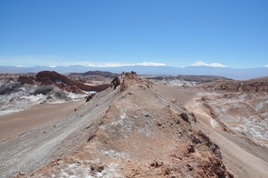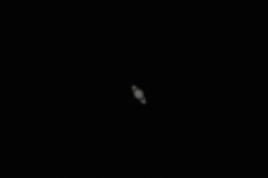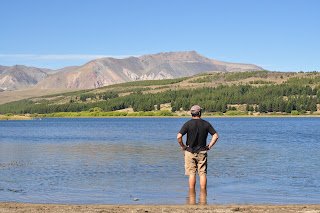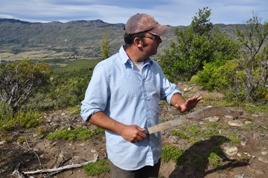After traveling for 29 hours from Bariloche, through Mendoza, we arrived late in Santiago, Chile. Again we were amazed at how fast the weather and vegetation changed on the west side of the Andes. It is much more lush and humid on the Chilean side. The country´s infrastructure is also very different from Argentina as Chile is sandwiched between the 20,000ft high Andes and the Pacific Ocean, sometimes just 70km seperating the two - Argentina has lots of wide open spaces between communities whereas in Chile we pretty much passed communities every ten minutes or so. Santiago is home to 1/3 of Chile´s 18 million people, is enormous and is the country´s economic and government centre. It is also considered the safest and most air polluted of South America´s big cities.
We had decided long ago that when we finally reached Santiago, the first big city since Buenos Aires in November (it was February 19th by this point), we would spend some airmiles and stay in a Best Western for a few nights. It was great to stay in relative luxury for a while - guaranteed hot showers, king size bed, fresh linens, cable TV and room service! We had pisco sours every night. What a great drink. After three nights at the Best Western we changed to a really great, chill, hostel that Mike and Kat had recommended. What great meals! While in Santiago we met up with Aussies Kat and Mike again for a delicious meal at the fish market (Mike and I agreed it was getting a bit weird bumping into eachother so much), took a city bus tour, I bought new shorts at an uber modern mall (with tears in my eyes - I loved those old shorts), dodged all sorts of young people making out, laid down in quiet municipal parks, ate at sidewalk restaurants, watched old fellows playing speed chess in the square, saw the fine art musem and generally enjoyed spending time in this fairly modern city in a comfy hotel and hostel.
We were struck with how efficient the city is (unlike Argentina all the bank machines gave you money and store owners didn´t hassle you for change) and how prosperous it all looked - there were building cranes all over the place. It was much more American than any other place we´ve seen so far, with Starbucks and Burger Kings all over the place. We also noticed lots of american music being played in people´s cars during rush hour. At first we kind of fell in love with it however, during one conversation with a Guatemalan guy we found out that Chile might be a little too western for most South American tastes - ¨none of my friends from Latin America want to live here. They come for school, then leave, it´s too boring¨. Perhaps after chaotic Bolivia and ´slow´ Argentina Santiago felt a little like home to us? We didn´t venture out of the center at all and perhaps we would have seen a different city altogether. Chile is meant to be one of the continent´s most stratified in terms of income and has a lot of poor.
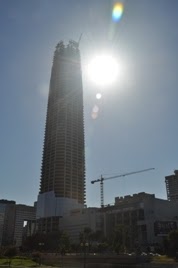 |
| This will be Chile´s tallest buildling once built - some 90 stories high. Construction sites like this are all over the place in what they call ´Sanhatten´. |
 |
| A little bit of home in Chile. |
 |
| Tossing out my old shorts. Look at how happy Elise is. Look at how bemused the ladies in the back are. |
 |
| At the fish market. |
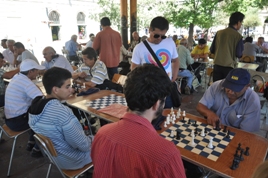 |
| At the main square |
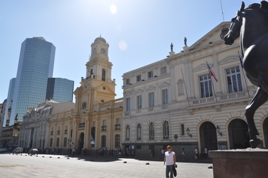 |
| Same. |
After five nights in Santiago we headed out on a night bus to the world´s driest place, the Atacama desert, which ironically enough had been suffering from floods in recent days. Go figure.






